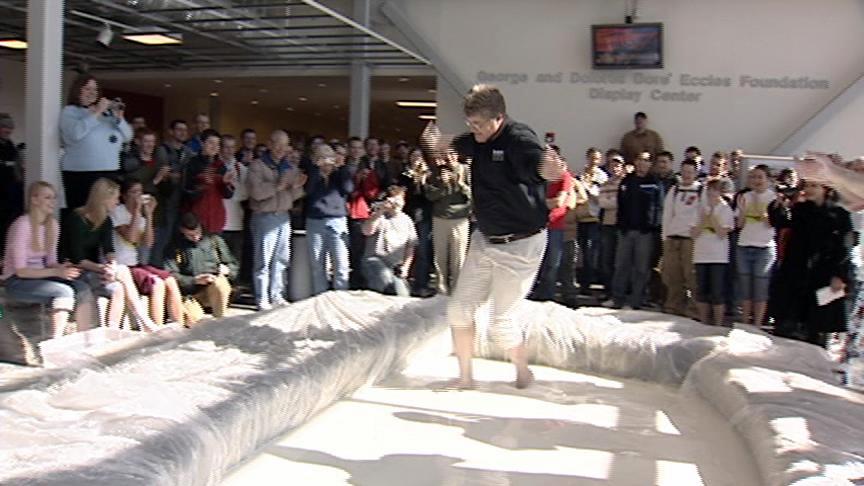Have you ever wondered how an incoming space capsule can
"bounce off" the atmosphere? I mean, after all, it's
just thin air. Well, how about a flat rock thrown
across a pond? It "bounces off" the water several times
before coming to a stop and sinking under the waves.
Each time it skips off the water, it gets a little
wetter and slows down. Each time it slows down, it
tends to sink a little more into the water, and fially,
it slows to the point where it just quits bouncing off
and simply sinks. The water is said to be acting in
a "Newtonian" manner. That is, the speed of the rock
determines how much it will sink and slow. The rate
is linear and can be computed.
But there are some liquids which don't work that way.
These liquids act like solids until a certain speed
is reached, and then they immediately act like liquids.
These liquids are called "non-Newtonian fluids".
An inexpensive, non-toxic example of a non-Newtonian
fluid is to make a thick mixture of corn starch in water. The
application of force — for example by stabbing the surface
with a spoon, or rapidly inverting the container holding it —
leads to the fluid behaving like a solid rather than a liquid.
But more gentle treatment, such as slowly inserting a spoon,
will leave it in its liquid state. Trying to jerk the spoon
back out again, however, will trigger the return of the
temporary solid state. If you stir it slowly, it acts like
a liquid. If you try to stir it quickly, it suddenly acts
like a solid and actually breaks into pieces.
Go ahead into the kitchen and try it. You know you want
to.
Because a non-Newtonian liquid can be solid when hit
quickly, but a liquid when pushed on slowly, it is
actually possible to walk quickly across a vat of it
and not even get your feet wet. But, if you stop and
stand for a moment, you sink into it like into quicksand
(which is, in fact, a non-Newtonian liquid). Therefore,
if one person is moving slowly in the liquid, he will
sink, while another person, moving quickly, can walk
on top of it....at the same time. That's right - a
non-Newtonian fluid can be BOTH solid and liquid at the
same time.
Recently, a Spanish television station decided to
use this as a publicity stunt, so they made a very large
vat of water and corn starch, and had two of their
personalities interact with it. The results are shown in
the video, below. The vat of non-Newtonian liquid and
the activity shown in the video were your remote viewing
target for this week.
|
Non-Newtonian fluids of this sort are being researched
for bullet resistant body armor, useful for their
ability to immediately turn into a solid sheet of protective
material when a bullet strikes it, while remaining soft and
flexible to the person wearing it, because the person
moves much slower than a bullet.
There are also fluids who's strain rate is a function of time.
One of the best known is glass. That's right, glass is a
liquid. If you try to bend or push on it too hard and fast,
it will break apart like a solid. Yet, if you look at the
windows in an ancient cathedral, you will see that the glass
has, over hundreds of years, sagged and flowed down its
sides like s sheet of water would.... like the liquid it is.
|

